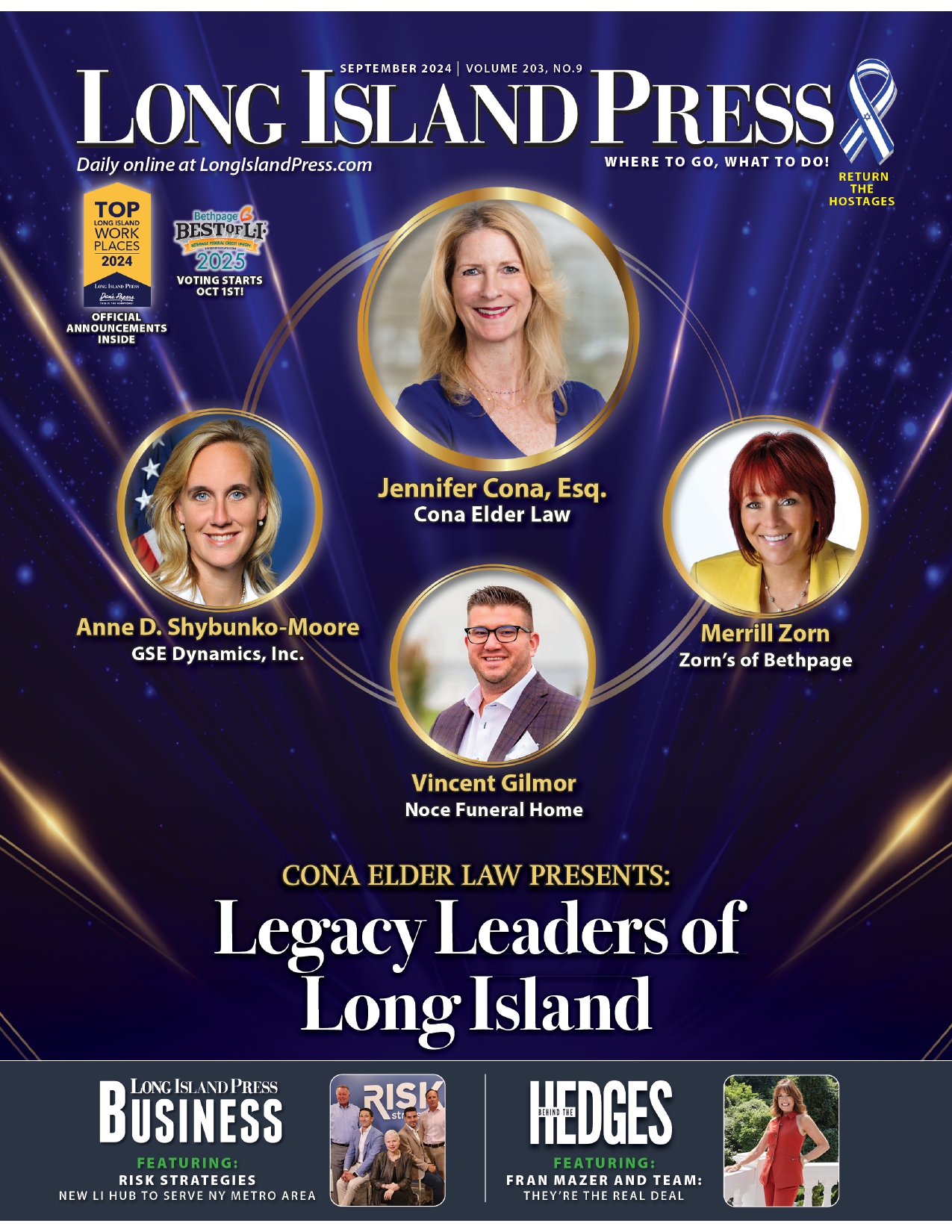
Remote Estate Planning in the Wake of COVID-19
Published in the New York Law Journal on September 11, 2020
The COVID-19 crisis delivered upheaval to most professions, and estate planning attorneys were not immune. In March 2020, Governor Andrew Cuomo issued a number of executive orders, which, among other things, required those who were not considered “essential” to work remotely rather than from their offices. There were also restrictions on meetings and gatherings that, combined with the additional vulnerability of the senior population, necessitated a suspension of the usual face-to-face meetings with estate planning clients.
To overcome this, estate planning attorneys quickly flocked to a number of videoconferencing software solutions to allow them to interact with their clients without meeting in person, such as FaceTime, Zoom, GoToMeeting, and WebEx. Remote meetings have now become second nature to many attorneys who may have never considered meeting clients remotely in ordinary times.
With the quick adoption of remote meeting technology, the initial consultation and follow up discussions could be handled with relative ease. The next hurdle was actually executing the documents prepared. Under existing statutes, notarizing a document, such as a deed or trust, required the signer to be physically present and appear before the notary. N.Y. Real Property Law §298 and §309-a.
Witnessing documents also presented a similar issue. When witnessing a last will and testament, the testator of the will must sign in the presence of the attesting witnesses or acknowledge his or her signature in their presence. N.Y. Estates, Powers and Trusts Law §3-2.1. Witnessing a health care proxy also requires the presence of the witnesses. N.Y. Public Health Law §2981.
At the early stages of the pandemic, attorneys were scrambling for evermore creative workarounds that would satisfy the presence requirement while keeping all of the parties safe and separate. Some of these workarounds included meeting in parking lots in separate cars and passing documents through the windows, to standing at an acceptable social distance apart in a client’s backyard and watching them sign through the kitchen window.
Thankfully, Governor Cuomo issued executive orders to remedy this ad hoc situation. This started with Executive Order No. 202.7, which allowed for remote notarization via videoconference rather than requiring physical presence, with the following conditions:
- The signer presents photo ID
- The videoconference is interactive
- The signer affirms they are physically in New York
- The signer transmits a legible copy (by fax or electronically) of the document to the notary on the same day
- The notary may then notarize the transmitted copy and send it back
- The notary may also then repeat the notarization on the original signed document as of the original date if they receive it within 30 days
Later, Executive Order No. 202.14 followed allowing documents to be witnessed remotely on a live and interactive videoconference. The conditions are somewhat similar:
- The signer presents photo ID
- The videoconference is interactive
- The witnesses must receive a legible copy of the signature page the same day
- The witnesses may then sign the copy and send it back
- The witnesses may also then repeat the witnessing on the original signed document as of the original date if they receive it within 30 days
The use of the word “may” is likely intended to be clear that notaries and witnesses are not legally obligated to sign a document presented to them.
Skipping any of these steps for the sake of convenience introduces a risk that the documents would be found invalid in future litigation. Keep in mind that the test of the validity of an estate planning document may take place beyond a time when it can be remedied (when the signer is incapacitated or deceased).
Historically, New York has been considered a strict compliance state for wills (Margaret Valentine Turano, Practice Commentaries, McKinney’s EPTL §3-2.1), and the current version of the power of attorney statute is notoriously strict in its form and execution requirements. N.Y. General Obligations Law §5-1501B and Berrian v. Siena Coll., 129 AD3d 1004, 1004 [App. Div. 2d Dept. 2015]. As such, practitioners must take care when executing documents, remotely or otherwise.
The newness of the remote signing procedures means that remote signing is ripe for future estate litigation. A presumption of due execution applies to attorney supervised will executions, even if the witnesses do not specifically recall the signing. In re Finocchio, 270 AD2d 418, 418 [App. Div. 2d Dept. 2000]. Along those lines, prudent estate planning attorneys have always established a standard procedure when meeting with clients and executing estate planning documents.
A standard procedure or usual routine allows an attorney to more successfully defend against future litigation. In re Estate of Leach, 3 AD3d 763, 764 [App. Div. 3d Dept. 2004]. Such a standard procedure could include steps like discussing family and asset information with the client, sending draft documents ahead of time directly to the client, clearing the room when the client comes in to sign, making small talk with the client to assess capacity, and asking the same sets of questions each time when supervising the execution of a will.
For remote signings, the standard procedure requires revision, but the core idea remains the same, so attorneys should establish a standard operating procedure specifically for remote execution of estate planning documents. It should include how the documents are transmitted to the client for signature, setting up of the videoconference, electronic transmittal and the mailing of the documents back to the attorney, and the execution by the witnesses and notary. When transmitting documents to the client for signature, the attorney should include detailed correspondence outlining the procedure.
Attorneys supervising remote document signings must also be prudent in assessing capacity and preventing undue influence, which may be more difficult to do remotely than in face-to-face meetings. Clearly, one of the essential roles of an estate planning attorney supervising the execution of documents is to be certain the client has the capacity to execute the documents.
A face-to-face interaction with the client has been the best and preferred method of assessing capacity. Videoconferencing, with all its benefits, is not quite the same thing. Older clients may be unfamiliar with the use of videoconferencing technology, even with a younger relative’s assistance. That confusion may result in delayed responses to questions or looking away from the camera, which may lead the attorney to question their capacity.
To assist in the detection and prevention of undue influence, attorneys generally will clear the room and meet with the client one-on-one both at the initial consultation and immediately prior to executing the documents. The purpose is to have a frank conversation without the presence of the possible unduly influencing relative. This is challenging to accomplish over a videoconference. For one, many seniors need the assistance of another relative in operating the technology.
Also, while you can ask the client to pan the camera around to see if anyone else is in the room, there may be someone lurking in the hallway or another room out of sight and overhearing everything. A surprise one-on-one telephone call the day before to review the documents is an option that should be considered.
Considering these drawbacks, when possible, it may be prudent to re-execute documents in person at a later date (following the usual procedure), especially in instances where a distributee is being disinherited or otherwise receiving less than their intestate share.
While perhaps awkward at first, remote meetings and remote document signings not only allowed estate planning attorneys to continue their practice during the pandemic, but created a foundation for continuing such practices after the crisis eventually ends. Meeting clients remotely drastically expands the geographical reach of each attorney. Further, rather than being required to travel multiple times to visit a homebound client, remote meetings can allow the estate planning attorney to meet with the client from their office virtually.
Additionally, for families that live in disparate areas, it also allows for other family members to more effectively participate in the planning conversation while avoiding travel and the associated costs. Even if remote signings eventually end and are not taken up by future legislation, the initial meeting for a homebound or distant client can be done remotely, saving an attorney’s most essential resource: time.
After six months we recognized that remote estate planning has both its benefits and drawbacks. During the height of the crisis it was the only option. However, subsequent to the crisis, we believe it should still be considered as a tool in an attorney’s planning kit to be utilized in the appropriate circumstances and we hope legislation is taken up to make it permanent.
For a senior homebound client whose distributees are being treated equally and are fully involved in the plan, remote estate planning allows a client to receive the legal services they require at reduced risk. It also allows attorneys to expand their reach into areas they may not have considered before. Even after the pandemic has receded, there should be a place for remote estate planning.
Melissa Negrin-Wiener is a partner at Cona Elder Law. Marcus O’Toole Gelo is a senior associate at the firm.
About the Author Cona Elder Law
Cona Elder Law is a full service law firm based in Melville, LI. Our firm concentrates in the areas of elder law, estate planning, estate administration and litigation, special needs planning and health care facility representation. We are proud to have been recognized for our innovative strategies, creative techniques and unparalleled negotiating skills unendingly driven toward our paramount objective - satisfying the needs of our clients.
Related Posts
Customized Estate and Elder Law Planning in 2025
Talk to Your Loved Ones This Holiday Season
What You Should Know About Qualified Personal Residence Trusts
Online Will Programs: You Get What You Pay For
Attention Snowbirds: Will Your Out-of-State Will Be Valid?
Grandparents and Grandchildren: What Are Your Rights?

